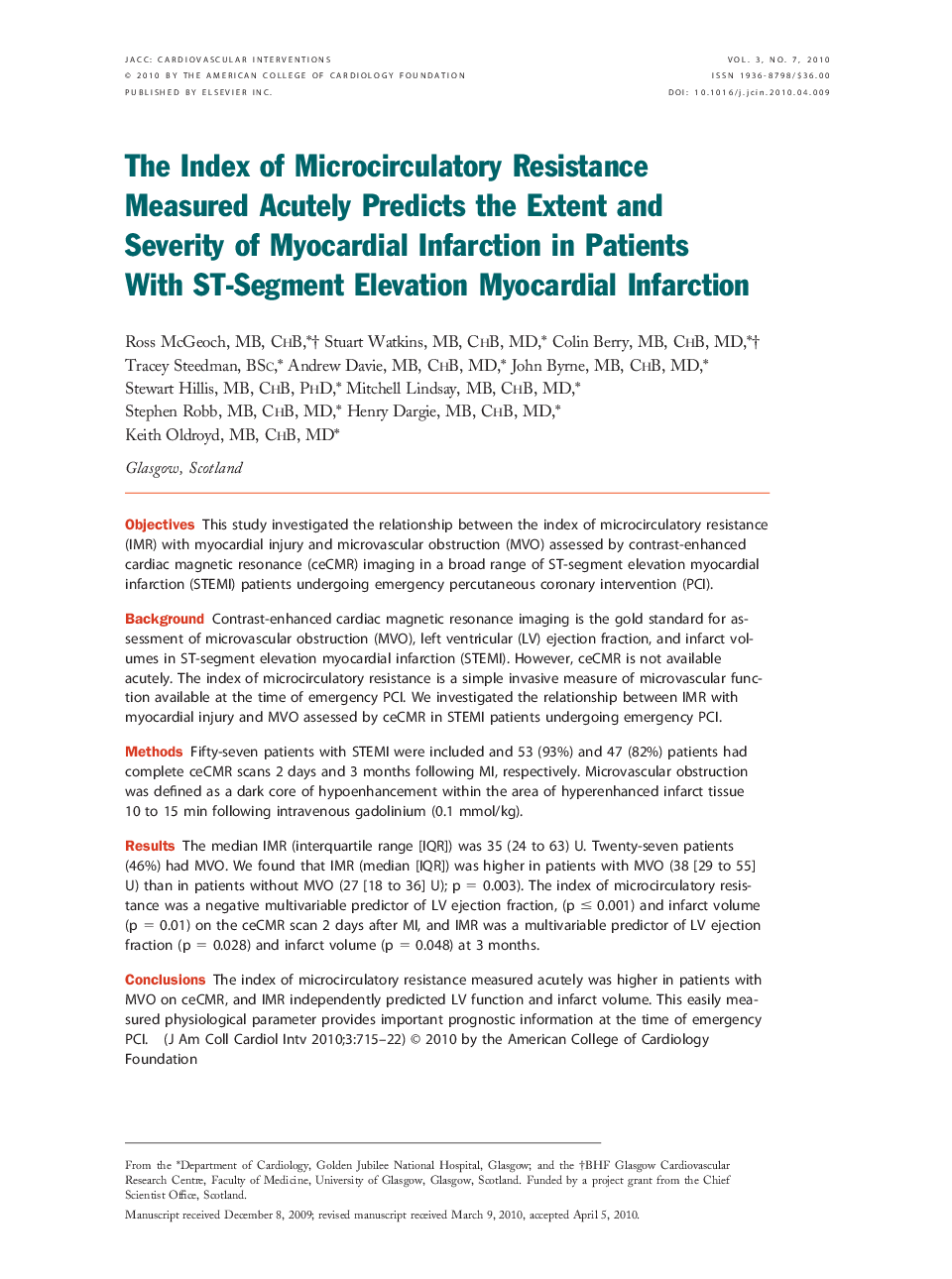| کد مقاله | کد نشریه | سال انتشار | مقاله انگلیسی | نسخه تمام متن |
|---|---|---|---|---|
| 2941168 | 1177058 | 2010 | 8 صفحه PDF | دانلود رایگان |

ObjectivesThis study investigated the relationship between the index of microcirculatory resistance (IMR) with myocardial injury and microvascular obstruction (MVO) assessed by contrast-enhanced cardiac magnetic resonance (ceCMR) imaging in a broad range of ST-segment elevation myocardial infarction (STEMI) patients undergoing emergency percutaneous coronary intervention (PCI).BackgroundContrast-enhanced cardiac magnetic resonance imaging is the gold standard for assessment of microvascular obstruction (MVO), left ventricular (LV) ejection fraction, and infarct volumes in ST-segment elevation myocardial infarction (STEMI). However, ceCMR is not available acutely. The index of microcirculatory resistance is a simple invasive measure of microvascular function available at the time of emergency PCI. We investigated the relationship between IMR with myocardial injury and MVO assessed by ceCMR in STEMI patients undergoing emergency PCI.MethodsFifty-seven patients with STEMI were included and 53 (93%) and 47 (82%) patients had complete ceCMR scans 2 days and 3 months following MI, respectively. Microvascular obstruction was defined as a dark core of hypoenhancement within the area of hyperenhanced infarct tissue 10 to 15 min following intravenous gadolinium (0.1 mmol/kg).ResultsThe median IMR (interquartile range [IQR]) was 35 (24 to 63) U. Twenty-seven patients (46%) had MVO. We found that IMR (median [IQR]) was higher in patients with MVO (38 [29 to 55] U) than in patients without MVO (27 [18 to 36] U); p = 0.003). The index of microcirculatory resistance was a negative multivariable predictor of LV ejection fraction, (p ≤ 0.001) and infarct volume (p = 0.01) on the ceCMR scan 2 days after MI, and IMR was a multivariable predictor of LV ejection fraction (p = 0.028) and infarct volume (p = 0.048) at 3 months.ConclusionsThe index of microcirculatory resistance measured acutely was higher in patients with MVO on ceCMR, and IMR independently predicted LV function and infarct volume. This easily measured physiological parameter provides important prognostic information at the time of emergency PCI.
Journal: JACC: Cardiovascular Interventions - Volume 3, Issue 7, July 2010, Pages 715–722